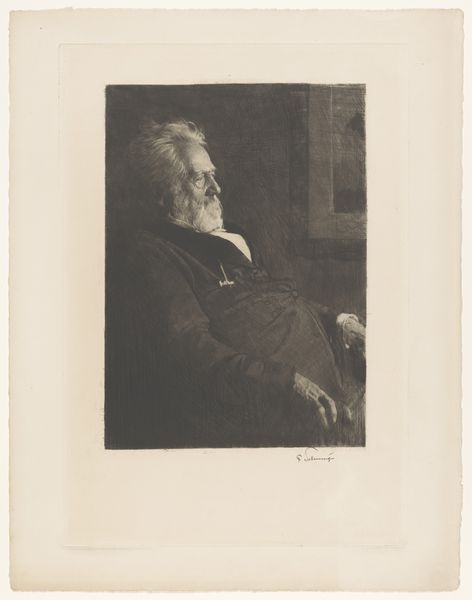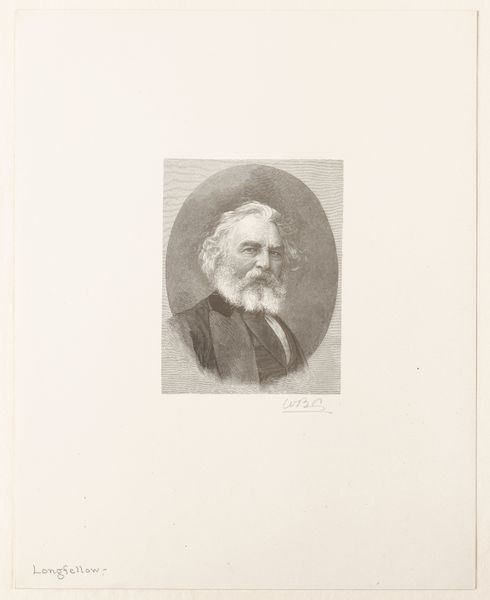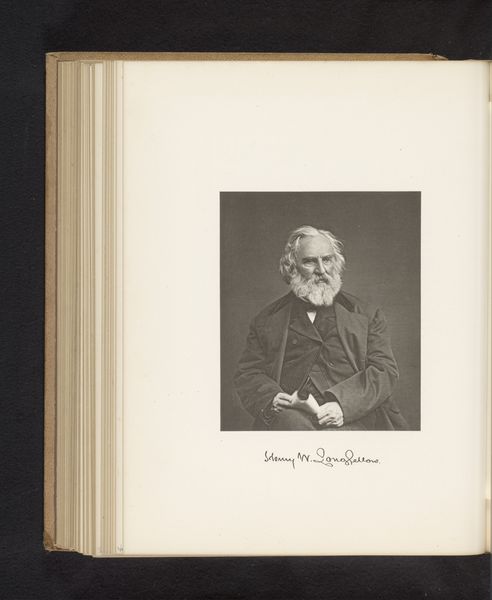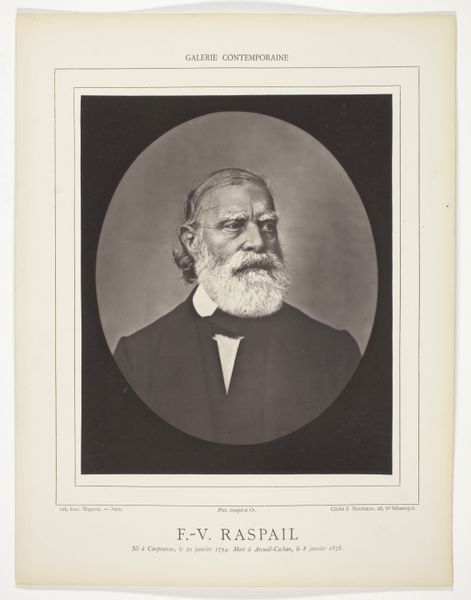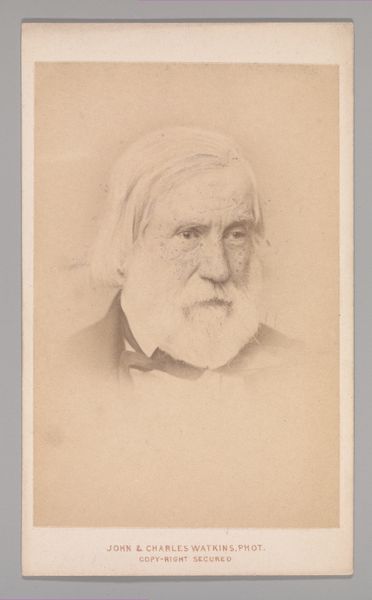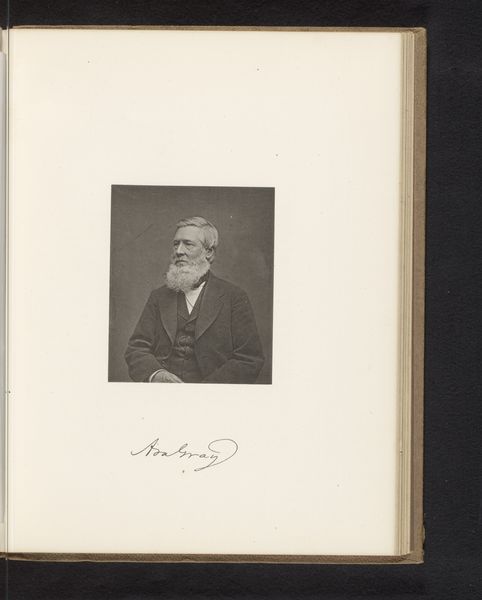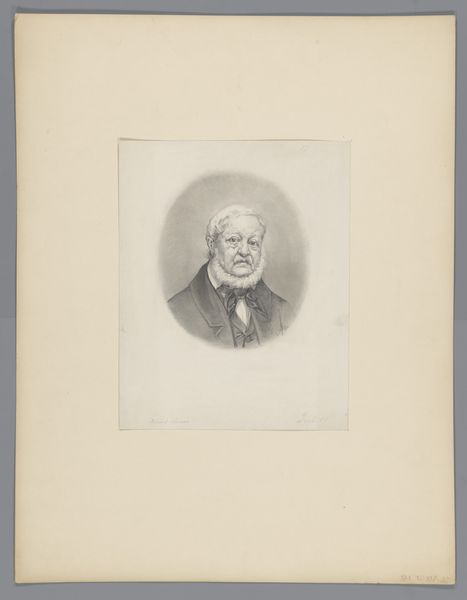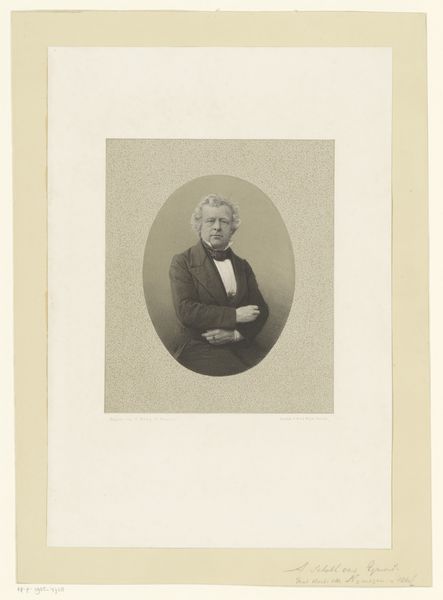
print, woodcut, wood-engraving
#
portrait
# print
#
figuration
#
woodcut
#
line
#
genre-painting
#
academic-art
#
wood-engraving
Dimensions: 4 15/16 x 3 3/8 in. (12.54 x 8.57 cm) (image)12 x 9 1/2 in. (30.48 x 24.13 cm) (sheet)
Copyright: Public Domain
Curator: Standing before us is "Henry Wadsworth Longfellow," a print dating to the 19th century, crafted by William B. Closson. It’s a wood-engraving, a technique that I find absolutely compelling. Editor: The portrait possesses an immediate gravitas. The sitter's intense gaze is amplified by the high contrast between his beard and the darkness of his suit, giving him an almost biblical presence. Curator: Indeed, the use of wood-engraving would have demanded incredible precision and control, especially given the need to render fine lines that model his face. The printing process would have been very labor-intensive at that time. How does the materiality play into your symbolic interpretation? Editor: Well, Longfellow, even in his own time, was already becoming an icon, and prints like these made that image reproducible, available for mass consumption and almost like a holy card depicting a secular saint of literature. The beard and hair certainly contribute to that archetypal sage image. Curator: That tension between the hand-crafted process of wood engraving and the potential for mass reproduction interests me. This print blurs the line between fine art and something that is widely consumable, a symbol replicated and dispersed within society. It allows the average person to connect and engage with an intellectual figure, while also maintaining the prestige of having original artwork. Editor: I completely agree; even in reproduction, it’s still a portrait imbued with the spirit of academic art, idealizing the subject to reinforce the importance of intellect and the romantic figure of the artist-sage. Curator: Ultimately, for me, it comes back to Closson’s skillful use of his tools. You can see the artistry within each engraved mark as light hits the paper. It is that tension between the manual process and reproducibility which continues to make it relevant and interesting to me. Editor: I find the layering of symbolism fascinating – from the classical elements to the portrait style that conveys so much about cultural values around literature. It allows for reflection about the nature of reputation itself.
Comments
No comments
Be the first to comment and join the conversation on the ultimate creative platform.

